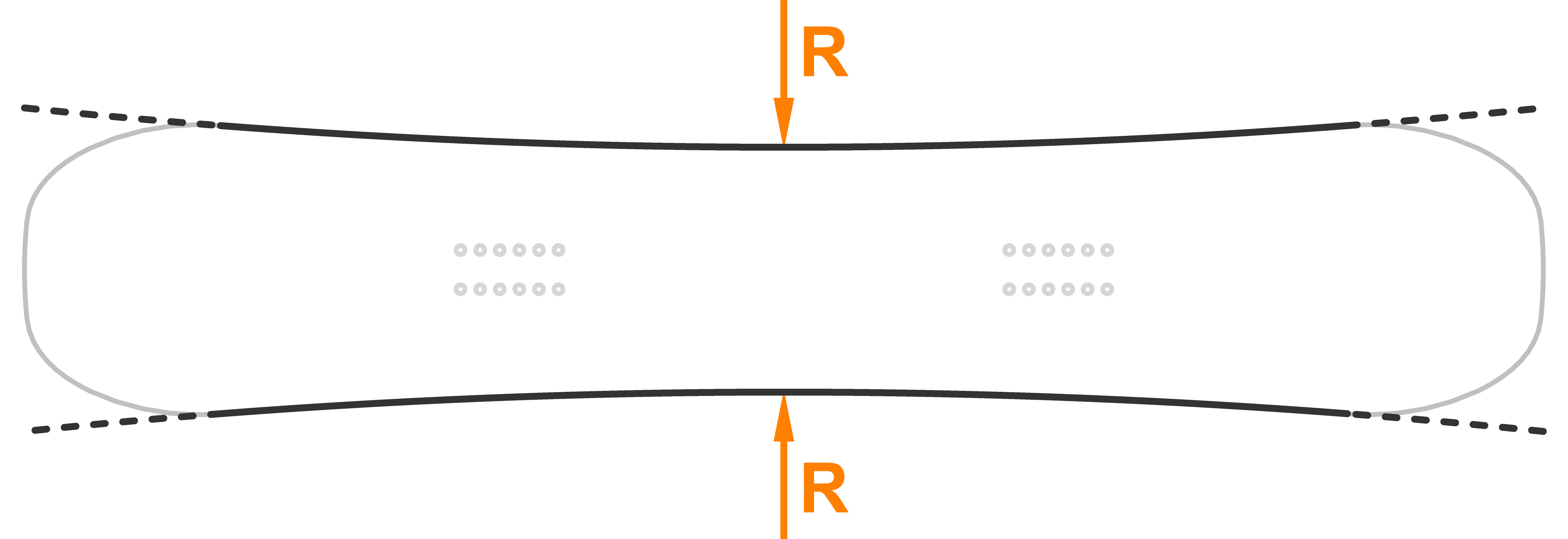Sidecut radius is a curve that is located on the left and right side of the snowboard along the edge. Sidecut radius is located in the working area of the snowboard, where is direct contact of the edge with snow.
Not all sidecut radii are the same. Maneuverability, control and performance of tricks on a snowboard will depend on the radius.
How sidecut radius affect turns and maneuverability?
Snowboard with a smaller sidecut radius will be more maneuverable initiating sharp turns.
Snowboard with a bigger sidecut radius will contribute to long and smooth turns.
Whom suits small and big sidecut radii
As a rule, riders who ride freestyle or in the park have smaller sidecut radius, since it helps to go sharply into a turn before performing spins on from the gap.
Small radius is also well suited for those riders who ride on rough terrain between trees and rocks, where sharp turns are necessary.
Large sidecut radius is well suited for freeride riders who use carving elements while riding, as it contributes to performance of long and smooth curves, which is very important for carving. Also, a large sidecut radius contributes to more stable riding at speed.
Types of sidecut radii
In addition to the size of sidecut radius, there exists different types of it.
Radial
This is the most typical and popular sidecut radius. It has the same value (radius) over the entire working area of the snowboard.
Progressive
This is a combination of several sidecut radii located in certain areas of the working area of the snowboard. This allows to combine different characteristics in one snowboard with different styles of riding.
An example of a progressive sidecut radius:
Smaller sidecut radius in the working area from the nose and tail to the external holes for bindings, for sharper entries and exits from turns and a larger radius between bindings for a smoother and longer lingering turn.
Edge hold
This type of sidecut radius is more familiar under the name Magne-tarction or Grip tech, and other commercial names. In simple words, this type of sidecut radius is characterized by waviness along the edge or in certain areas to create peaks of contact points with snow. This contributes to better grip of the snowboard riding on frozen snow or one that is covered with ice.

